The Raumplan House: An intermediate terrace house in Singapore filled with light and greenery
Designed by Formwerkz Architects based on a 19th century concept of connecting spaces, this home features good airflow, abundant light and views of landscaping at every turn.
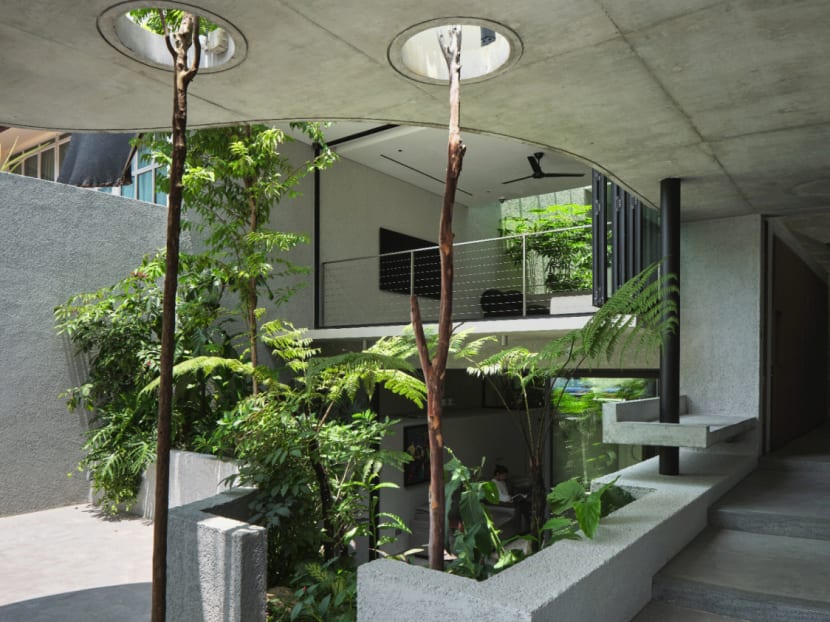
The design of this intermediate terrace house by Formwerkz Architects is based on Austrian architect Adolf Loos’ concept of Raumplan. (Photo: Fabian Ong)
Typically, houses are designed from the plan with clear stratification of levels. As an alternative, 19th century Austrian architect Adolf Loos conceived of Raumplan (literally translated to “spatial plan”). This theory presents a three-dimensional way of thinking about the design of interiors, arranging rooms around a central staircase core rather than one on top of the other.
He once expounded: “For me, there is no ground floor, first floor, et cetera… Storeys merge and spaces relate to each other. Every space requires a different height: The dining room is surely higher than the pantry, thus the ceilings are set in different levels. To join these spaces in such a way that the rise and fall are not only unobservable but also practical, in this I see what is for others the great secret, although it is for me a great matter of course.”
The design of this intermediate terrace house by Formwerkz Architects is based on Loos’ Raumplan. The result is an intense experience weaving together split-levels, terraces and atriums that works wonderfully well for the family of four living here, garnering it a Merit Award in the recent Singapore Institute of Architects Architectural Design Awards.
Jeremy Loy and Peggy Lim had purchased the plot after returning from an overseas work stint in the Netherlands for five years. The location was close to their daughters’ school but what really attracted them was the house’s dual frontage.
Instead of the rear facing the back of another house, it opens to a public green space where the neighbours had planted a community garden. “They plant herbs and vegetables, and whenever they send a text to the other neighbours, I go and buy some from them. They then buy more seeds with the proceeds,” shared Lim, who is obviously enamoured with this camaraderie.
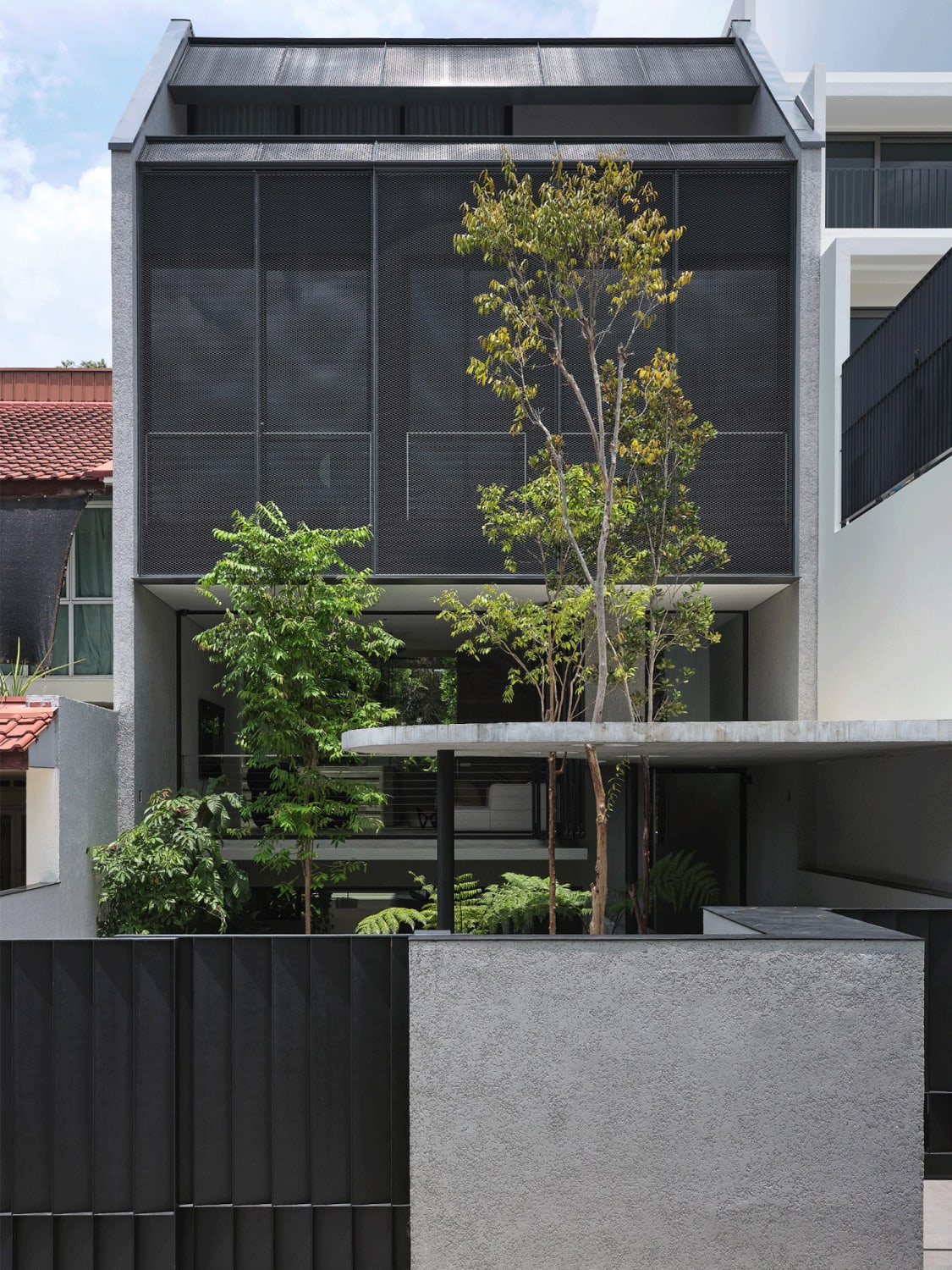
When they engaged Formwerkz Architects, the couple requested for plenty of natural light. Natural illumination is conventionally lacking in terrace houses with its deep plan and narrow frontage. It is the same for Dutch city dwellings. “In the past, the Dutch paid taxes for their dwellings based on frontage so they were long with narrow frontages. Typical Dutch houses have big windows in the front and no skylights inside. When we were living in one, there was this obsession with light because in winters, it was dark and gloomy,” recalled Loy.
The architecture team organised the programs around a central atrium, attached to the lift and staircase. “The atrium is naturally lit with a skylight and ventilated by an induced stack effect that works better than cross ventilation in this instance due to the east-west orientation of the site that limits [employment of] the prevailing wind direction for cross ventilation through the house,” explained Alan Tay, one Formwerkz Architects’ co-founders.
Standing in this atrium, one feels a part of the outdoors. A cluster of towering Sterculia foetida stretches upwards, basking in the bountiful sunlight. Its widespread foliage shades the spaces beneath. There is little distinction between garden and house as greenery flourishes inside as well as out.
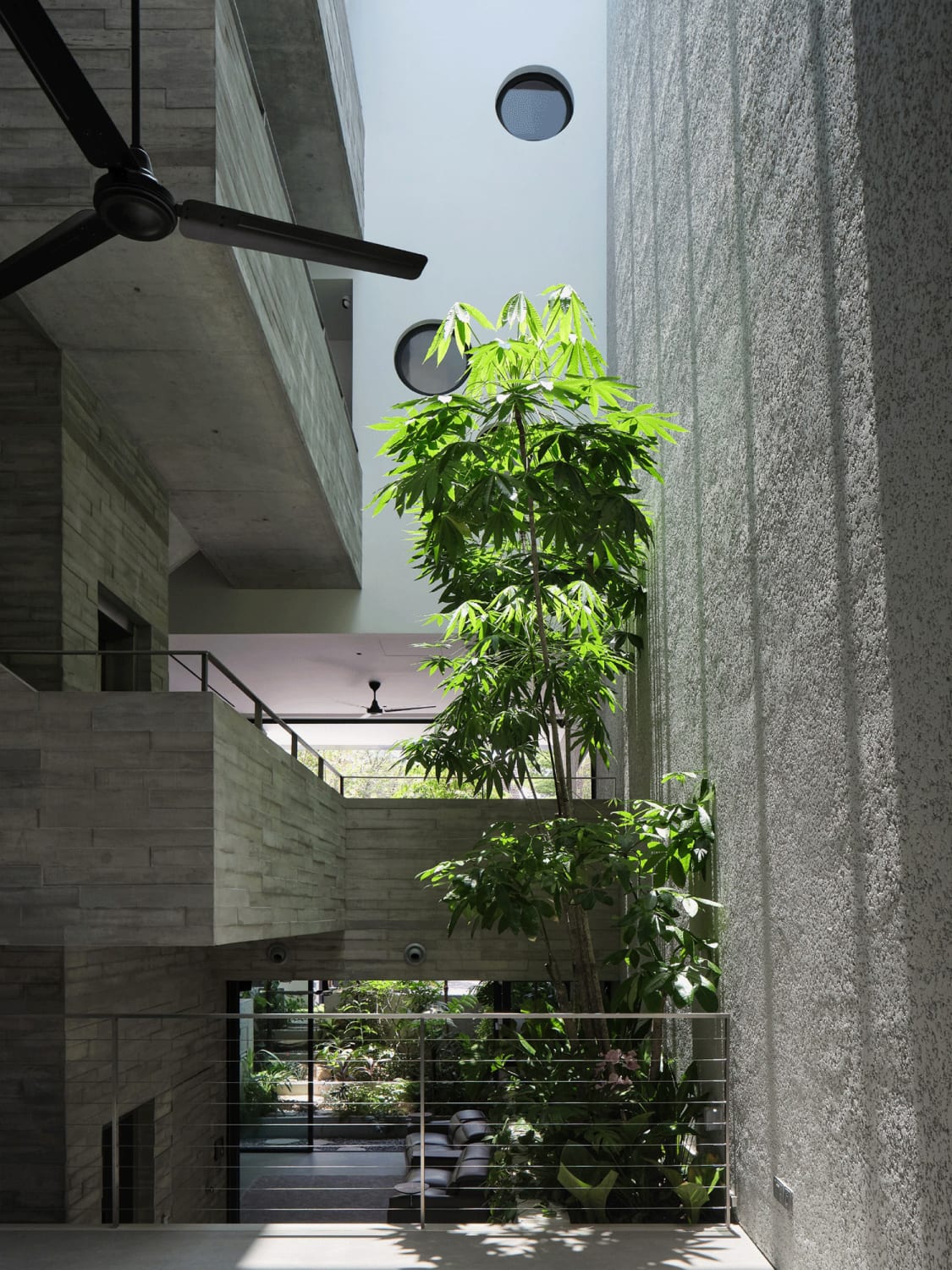
“It is always our inclination to design with nature. In a sense, nature and landscape, or sometimes the ecology, is not only a part of our design vocabulary but also part of the design issues we wish to engage,” said Tay.
A skinny trunked Tristaniopsis tree and Cratoxylum cochinchinense plant poke out of a curvilinear canopy defining the front porch. It marks the start of a garden that cascades downward to the entertainment room, providing a pleasant view for the semi-sunken space. A planter continues from the garden into the house to become a backdrop for the living room.
“A lot of friends who visit say that it’s nice but they won’t do this as they don't like the living things that come with the plants in the house. But we embrace this blurring of lines where you feel like you are outdoors while inside,” said Loy.
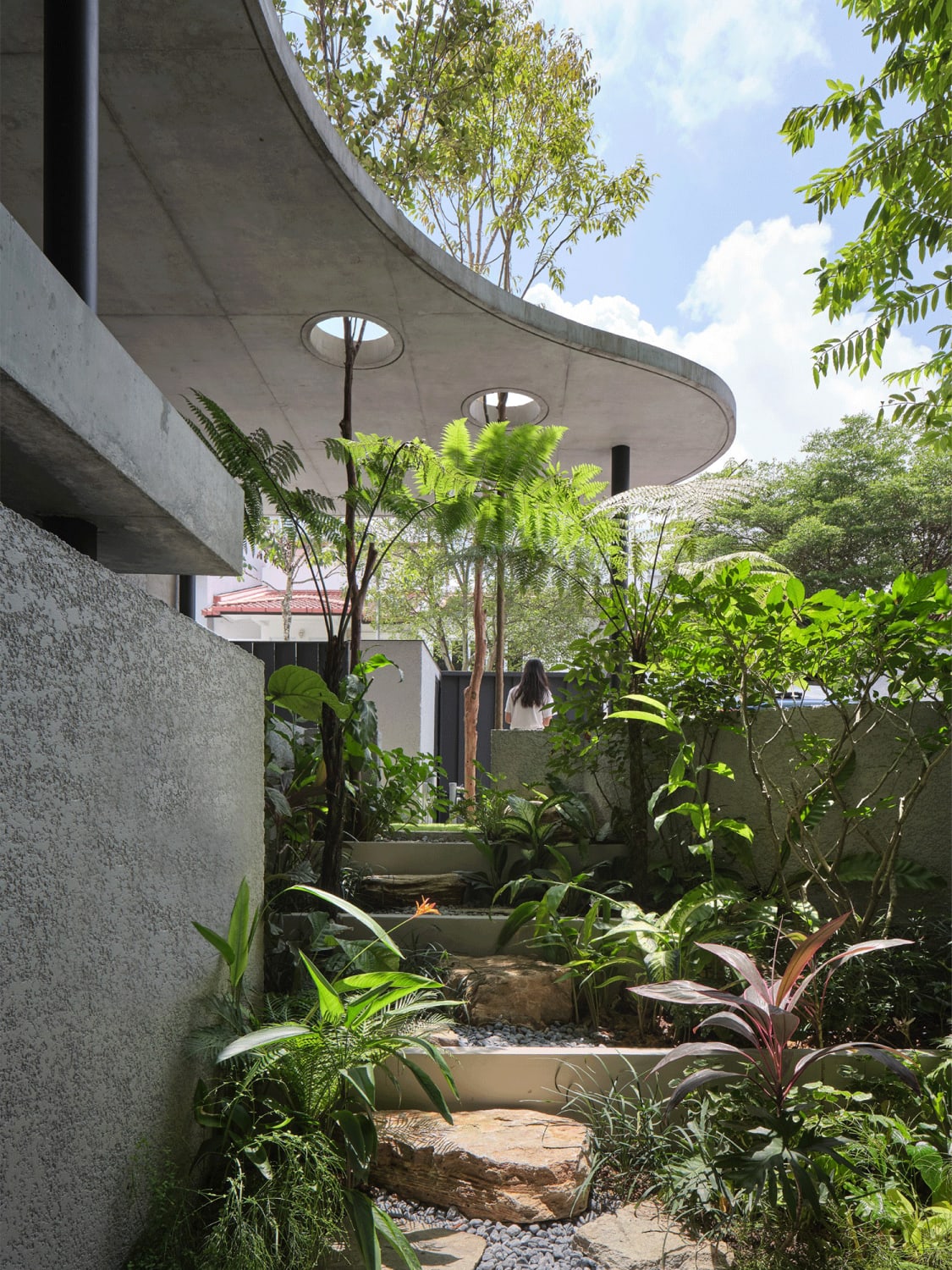
The land slopes slightly by a metre upward to the rear. This aided the staggering of different rooms in the house, lessening the arduousness of the journey between floors. The lift assists in that aspect too. From the front porch, one can either take a few steps up to the living room or saunter down a stepped garden path into the entertainment room. Loy had requested for this semi-open basement after discovering an image of a similar space online.
“I saw that the basement doesn’t have to be a dark, musky space. It feels airy and I don't feel hemmed in,” said Loy, who enjoys karaoke sessions with friends or watch football here. “It’s nice because from the street level, we can’t be seen even if I leave the window open,” he shared.
The living room overlooks the double-volume dining area in the rear. A study room, tucked midway between the living and next level, also overlooks this space. The openness makes it feel like a balcony. “This is where the kids did their online and piano classes during the ‘circuit breaker’. While they were doing that, I can be at the dining room downstairs reading the newspapers,” said Loy on this delightful connection.
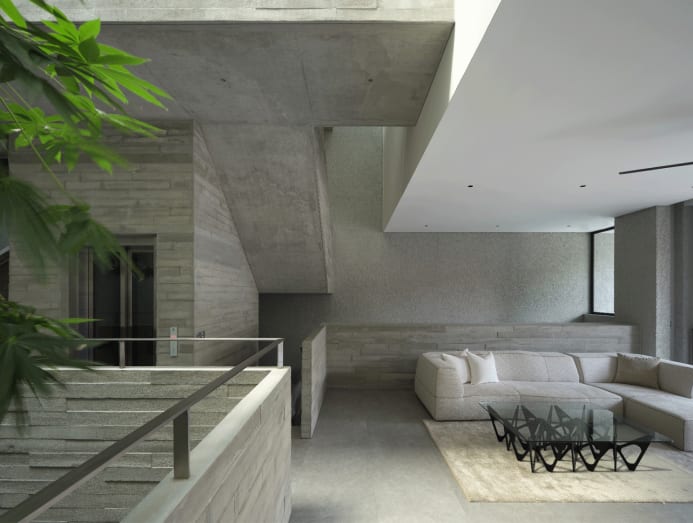
The dining room was made the heart of the house with its voluminous quality, as this is where the family hangs out most. “We told Alan that most of the time when we entertain, we would end up at the dining room all the way through. So we positioned the living room away to become like a private area for small gatherings of guests away from the main group,” said Lim.
While the lower floors are thoroughly open, the bedrooms are more introverted, tucked upstairs for privacy. The rooms are not overt in size. “It was intentional. We wanted the kids to have smaller rooms so they would come out and play.” said Loy.
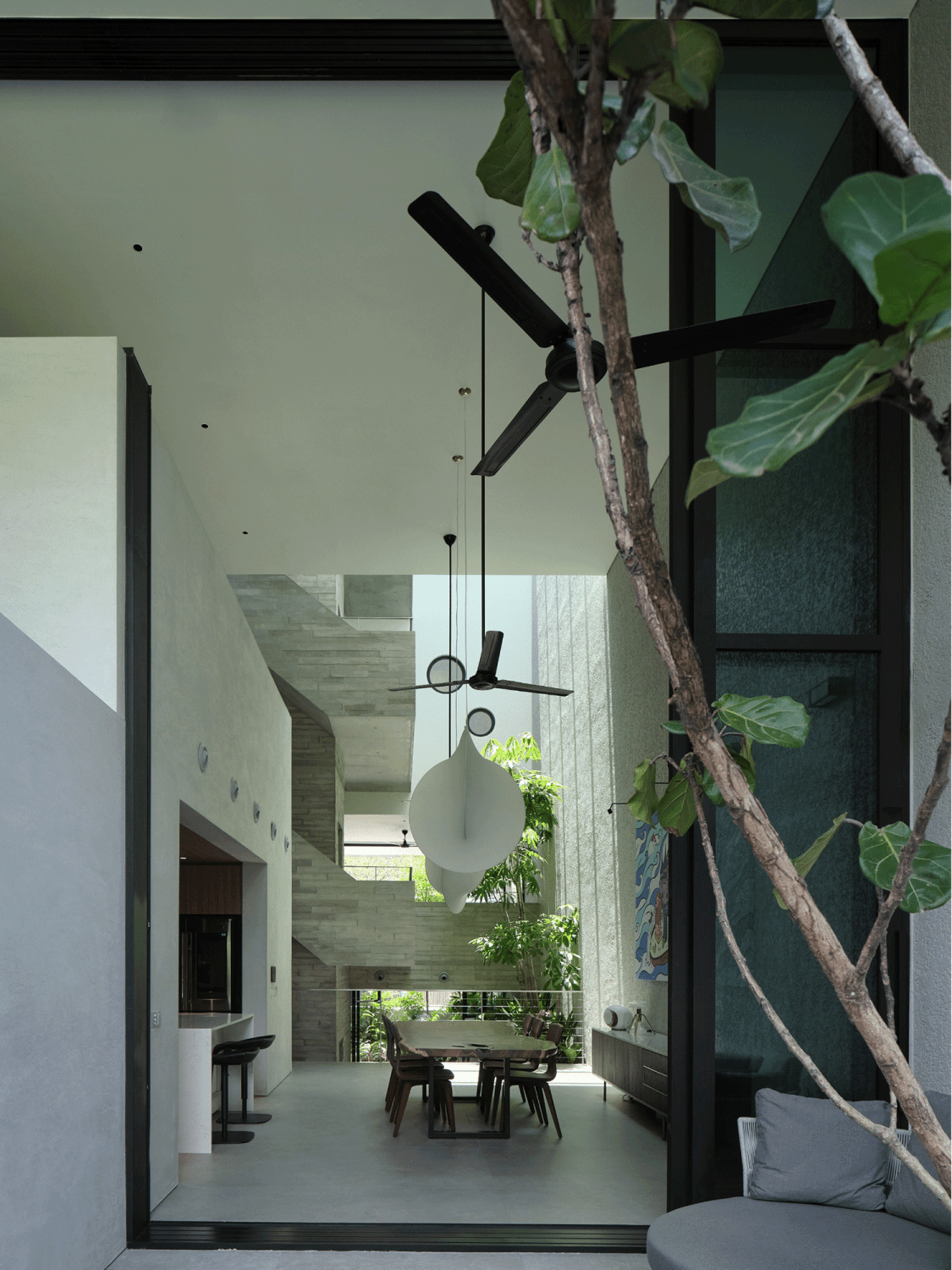
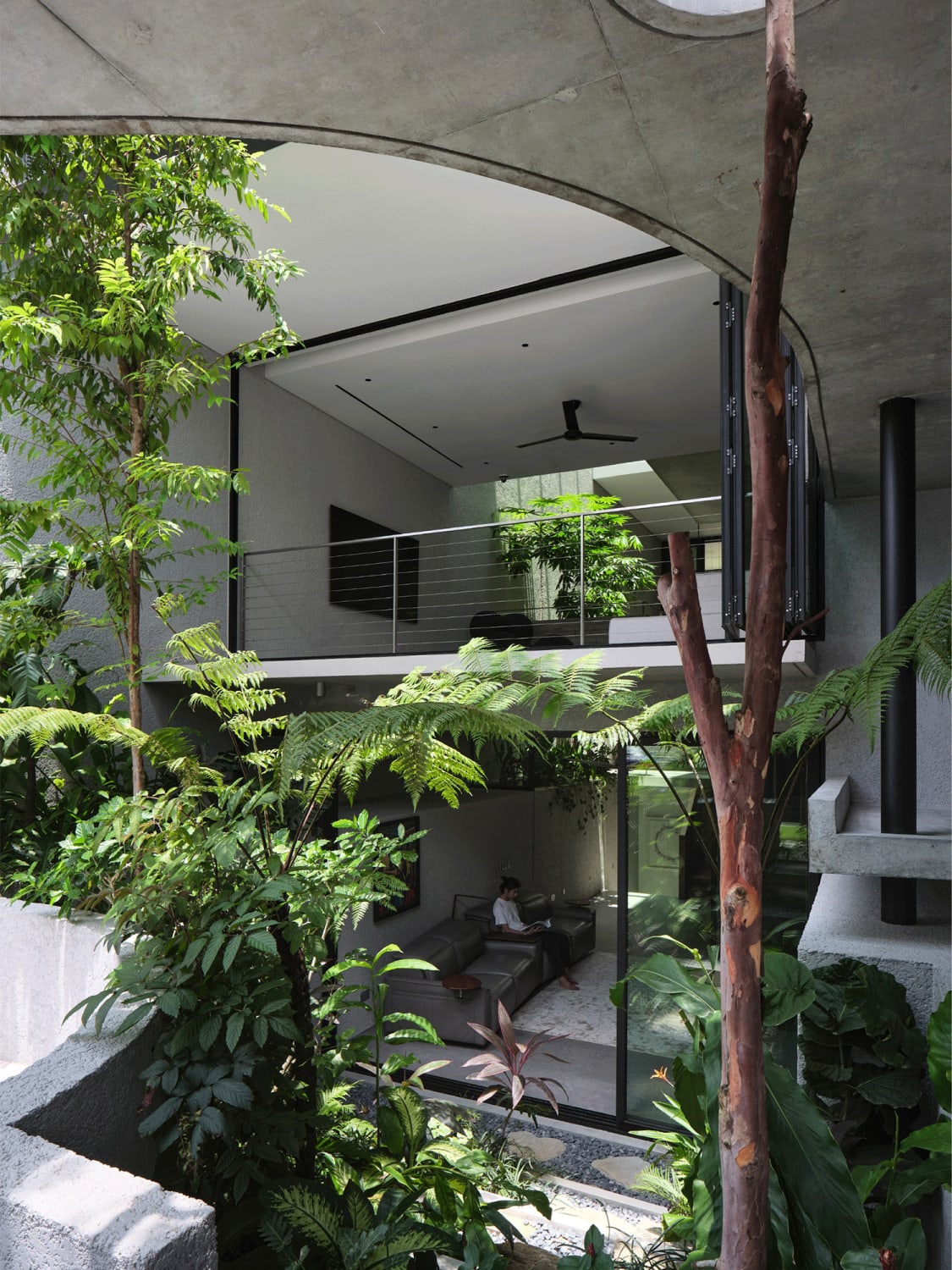
The children’s rooms are located opposite the master bedroom, across from the atrium but Tay connected them in a playful manner. In the master bedroom’s walk-in wardrobe, one of the doors open to a cosy niche with a porthole window that faces corresponding portholes in the children’s bedrooms.
“I can see if my daughter's light is switched on and she’s not sleeping yet,” said Lim. “In typical terrace houses laid out floor to floor, you can’t see someone upstairs. You have to run up to check.” In the house, communication between rooms is informal and somewhat fun. The staircase has also become a default control tower, where family members stand at the landings to holler to the rest of the household.
For the house’s materiality, Tay brought in a feeling of the outdoors by continuing the exterior’s board-form concrete on the facade. “We wanted the materiality to be as monolithic and subtle as possible. The colours and vibrancy should be derived from the life (from nature and traces of the family) in the house,” said Tay.
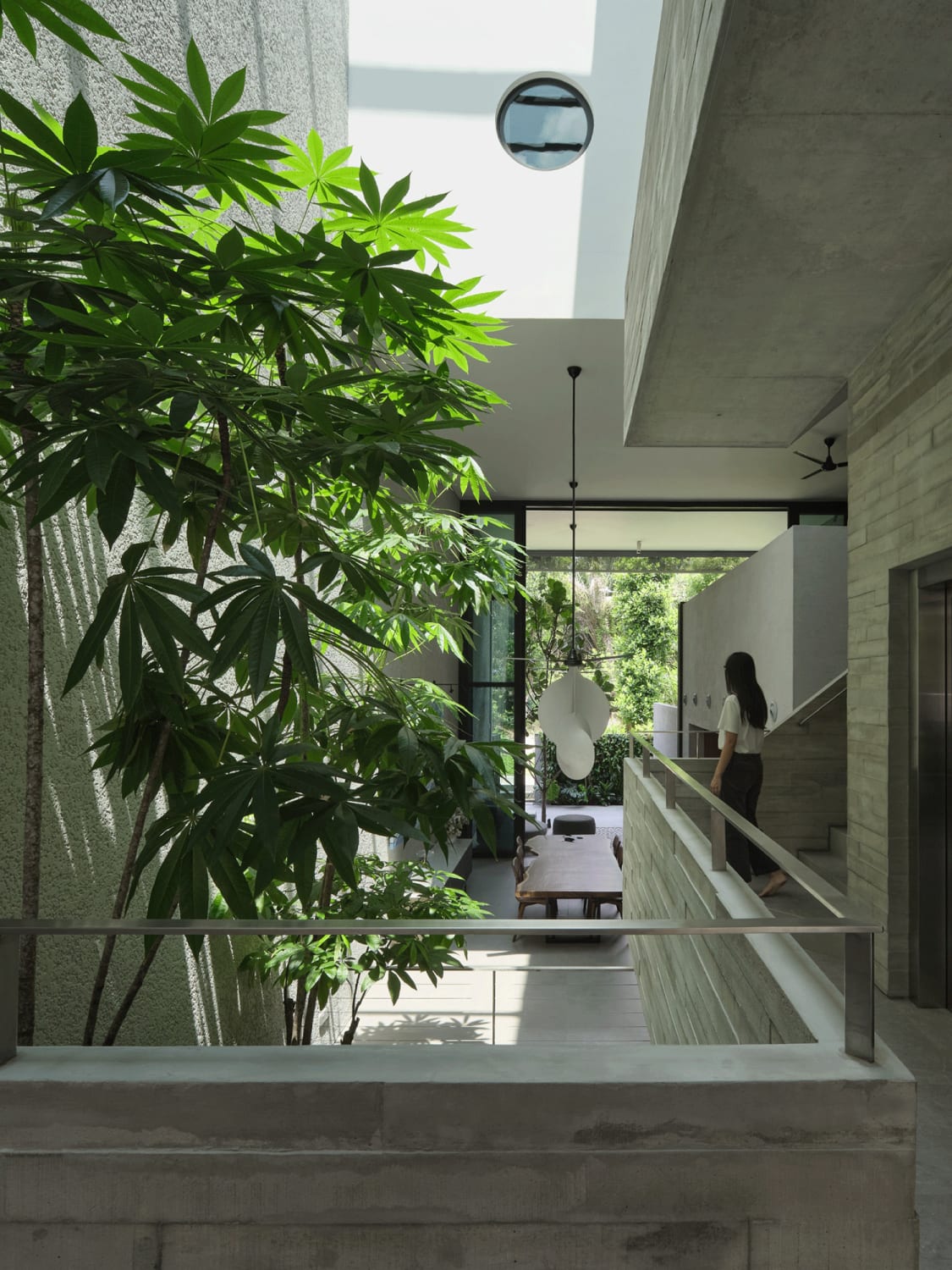
Teak wood is used as accents, such as staircases or as a coffered ceiling in the master bathroom. “It’s always nice to have wood in the bathroom but it is impossible to maintain in the humid tropics so we put it on the ceiling. We just have to ensure the room is always well ventilated,” explained Tay.
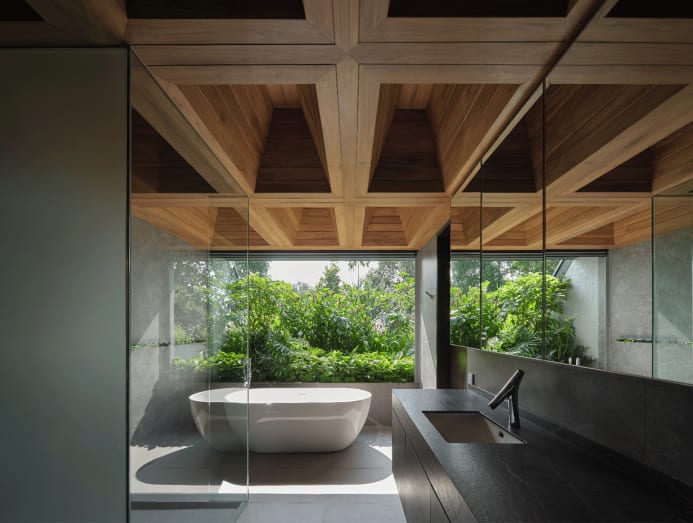
At the facade, a layer of dark expanded metal mesh filters sunlight and unwanted views, hiding the openness of the house that makes it a good case study for tropical living. As Loy attests, “When I visit my neighbour’s house, the lights are always switched on. For us, it’s only fans and natural light until evening.”






